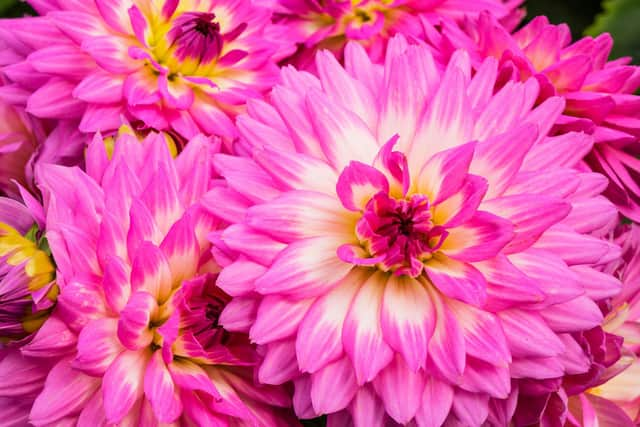Time to start thinking about planting summer bulbs


From dazzling dahlias to champion crops, an expert offers ideas on the best summer-flowering bulbs to plant in spring.
No sooner have your daffodils popped up, it’s time to start thinking about what beautiful bulbs you want to grace your garden in summer.
Advertisement
Hide AdAdvertisement
Hide AdFragrant lilies, dahlias, gladioli and tiger flowers, lollipop-style alliums and deep mauve agapanthus will brighten up the flower border when some perennials are fading, and can be planted in spring when the soil is starting to warm up. Not only this, but potatoes and onions can be planted to produce delicious crops in summer.
Summer-flowering bulbs are an easy way to add a splash of colour to your outdoor space, regardless of size. They are loved by professional gardeners and beginners alike, thanks to their fuss-free planting, says Marcus Eyles, horticultural director of Dobbies Garden Centres (dobbies.com).
Here, he talks through his top tips for planting summer bulbs, and favourite ways of achieving a showstopping display…
Complementing colours
One of the best ways to achieve maximum impact with your summer blooms is to choose bulbs that complement each other in colour and tone, says Eyles.
Advertisement
Hide AdAdvertisement
Hide Ad“There are so many kinds of summer bulbs, but dahlias are one of the most popular and come in a variety of brilliant colours that will inject some vibrancy into your garden in the summer months,” he explains.
“With shades ranging from pink and purple to scarlet red, orange and yellow, these warm blooms can be mixed and matched to create an eye-catching display, whether that’s in a flowerbed or a container. What’s more, dahlias bloom right through until autumn, meaning you’ll have fantastic colour in your garden for months.”
Container planting
“People often think you need to plant bulbs in the ground, when in fact, lots of summer bulbs on the market thrive in a container,” says Eyles.
“Begonia bulbs, for example, grow better in warmer soil, making them ideal for those looking to add some colour to a doorstep or balcony.”
Tips for success
Advertisement
Hide AdAdvertisement
Hide AdTo ensure your container bulbs thrive this summer, he suggests checking the planting depth of your chosen bulbs before planting.
“Then fill your pot to this depth with peat-free multipurpose compost.
“Once you’ve done this, place your bulbs in the soil, pointed end facing upwards, making sure to space them out evenly so they don’t touch.
Then water your bulbs well and move the container to your preferred spot in your outdoor space, before filling it up to the top with compost.”
Planting vegetables
Advertisement
Hide AdAdvertisement
Hide AdSpring is a wonderful time to get planting vegetables to harvest in summer – with plenty of varieties out there to choose from, Eyles observes.
“Onions and shallots can be planted between March and April and will be ripe in mid-late summer, ideal for enjoying in your favourite summer salad. Seed potatoes are another great option for planting in spring, and usually only take about 10 to 12 weeks to grow, meaning you can enjoy them throughout the warmer months.”
Planting advice
Whatever bulbs you choose to plant, Eyles advises:
1. If you’re using very wet or heavy soil, after you dig a hole for your bulb to be planted, put a layer of grit at the bottom. This will prevent the bulbs rotting if we have a particularly rainy spring.
2. Once you have planted your bulbs, add a plant label to the area, to remind you to dig them up after summer, once they have finished flowering. Most summer bulbs aren’t hardy enough to leave in the garden year-round and should be stored away during the winter months, ready for planting again next spring.
Comment Guidelines
National World encourages reader discussion on our stories. User feedback, insights and back-and-forth exchanges add a rich layer of context to reporting. Please review our Community Guidelines before commenting.